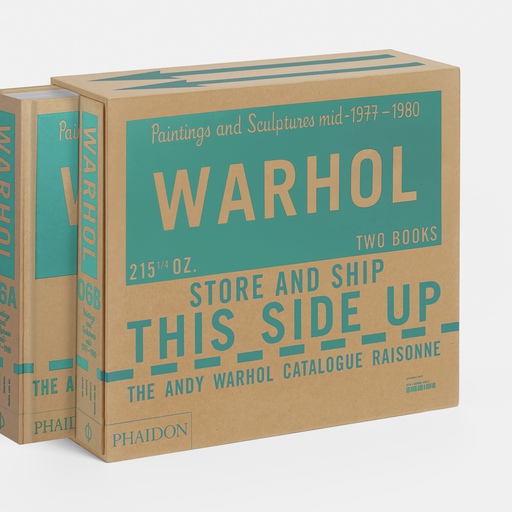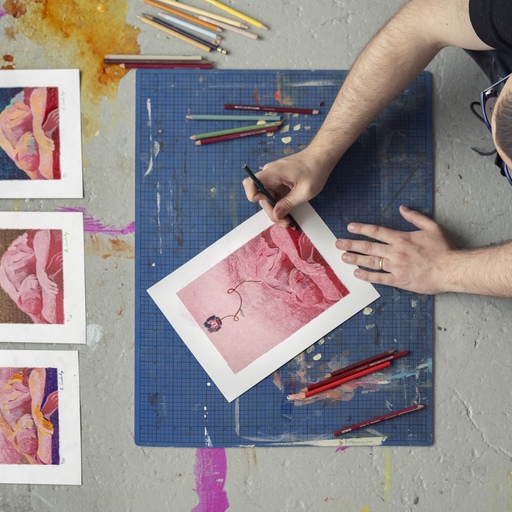We’ve all made sacrifices this past year, whether we’ve reigned in social plans, cut travel arrangements, or worked harder and longer in isolation. Similarly, many people in the art world have truly stretched themselves, bidding high on works in charity auctions, donating works to causes they care about, or organizing crucial philanthropic drives and enterprises. As 2021 draws to a close, we’re reflecting on what we learned about life from a year of giving generously.

Christina Quarles - photographed by Elliot Orona © Christina Quarles, Courtesy Pilar Corrias Gallery, London and Regen Projects, Los Angeles
Christina Quarles , whose print Magic Hour 2016/2021 benefitted Skowhegan School of Painting & Sculpture’s summer program, reminded us just how beneficial studying can be . “After three semesters of trying to figure out my painting practice, everything clicked in my final semester at Yale, so I was heading to Skowhegan ready to paint. I made a ton of work that summer. People would come into my studio and be like, you should relax, it’s summertime, and I would just be like, I’ve spent my whole life trying to make this work and I’ve finally figured it out, this is relaxing!”

MOCA Director Klaus Biesenbach
MOCA LA Director Klaus Biesenbach , whose print series with Artspace, featuring works by Huma Bhabha and Camille Henrot, benefitted MOCA, recalled his own publicly spirited introduction to art. “For me there were no art museums, no art galleries. I lived in the countryside in Kürten, 40 miles from Düsseldorf where Joseph Beuys taught his master-classes. I had a great art teacher who, when he was teaching us kids, was at the same time a masterclass student of Joseph Beuys. So I grew up thinking that art is political, art is ecological, art is civil disobedience, art is Utopian and art is the responsibility to create the world we live in.”


Glennda Testone , Executive Director The Lesbian, Gay, Bisexual & Transgender Community Center (The Center) in New York City (beneficiary of The Center Benefit Auction), shared the ways in which her organization is meeting today’s challenges. “People may be more aware of our incredible Haring bathroom mural or the fact that ACT UP started at The Center, but there are so many layers of history to learn, especially with the help of The Center’s National History Archive that preserves and shares precious stories from decades of our past.However, there are definitely areas of our work that are less well-known because they’re so new. For example, we recently launched holistic support services for survivors of domestic violence, and an economic advancement initiative for LGBTQ young adults ages 18-30 called Center Works.”

Jim Hodges - photograph by Tim Hailand
Jim Hodges showed how personal charitable choices can be when he launched his Artspace edition rearranged for Bil l, 2021. "When reflecting on which nonprofit should benefit, my old friend Bill Bartman, who died in 2005, came to mind. In 1987 Bill started Art Resources Transfer and since its founding, A.R.T. has remained committed to distributing and publishing books on contemporary art while interrogating the shifting social roles of the library and the printed book. A.R.T seemed like the perfect organization to benefit from a multiple that’s also a book."

Lisa Yuskavage, 2018. Photo by Amanda Webster © Amanda Webster. Courtesy David Zwirner
Lisa Yuskavage , whose work Mardi Gras Dude formed part of the Unquestioning Love sale, deepened this personal perspective, with this touching recollection. "I spent several years (1989-1993) at St Luke’s Roosevelt’s AIDS ward helping my friend Jesse Murry through his illness and finally his death from pneumocystis pneumonia in January 1993. I met and befriended so many of his roommates. One man in particular stands out in my memory: Eddie Vega. He was a champion dancer of Ed McMahon’s Star Search. Jesse was so excited to be his friend as when Jesse was a student, he used to run home to watch Eddie twirl and gyrate and win the prizes year in and year out. Eddie had a large loving family and his side of the room was always bustling with love and food while our side of the curtain was just us or another friend or Jesse’s partner George.
"One night Jesse called me long after visiting hours and asked me to come quickly. I lived on Ludlow Street and it was cold out but I ran to the train and got there by 10pm. Jesse was alone in his room. Eddie’s bed was stripped and Jesse asked me to help him get into a wheelchair and go across the hall to the private room the nurses provided for Eddie and his family to have their final moments together with their boy. They quietly sang their traditional folk melodies and played guitar and stroked and kissed him. It was a vision of love I have never seen and will never forget. I watched with Jesse as Eddie left his body. As I got Jesse back to bed he told me that this night was his gift to me for what I had done for him all these years."
























